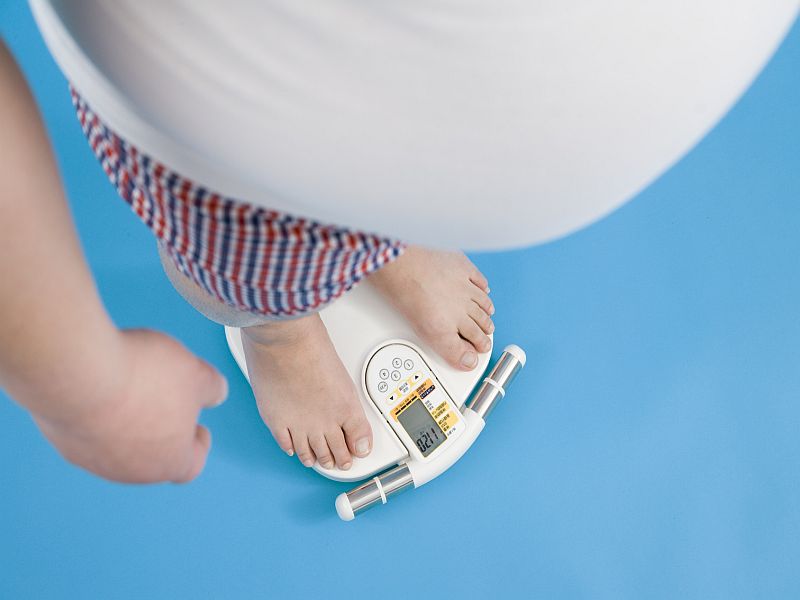
A new type of “balloon-in-a-pill” may offer a nonsurgical way for obese people to shed pounds — and get healthier, too, a small study hints.
The study, of just 10 patients, tested the latest rendition of the so-called gastric balloon.
Some weight-loss experts consider gastric balloons an alternative to invasive obesity surgery. The approach is straightforward: One or more balloons are placed in the stomach, then inflated — allowing them to take up space and curb the patient’s appetite.
There are already a few weight-loss balloons on the market in the United States. Two, called ReShape and Orbera, are ingested with the help of an endoscope placed in the mouth and threaded down into the stomach.
Another, called Obalon, is swallowed via a capsule. The capsule, which is tethered to a thin catheter, dissolves once it reaches the stomach, revealing the balloon. The balloon is then inflated with air through the catheter.
All three balloon devices must be removed through an endoscope after six months.
The device tested in the new study is different in a few ways, said researcher Dr. Hidetoshi Ohta, of Otaru Ekisaikai Hospital in Japan.
Like Obalon, it is taken by pill. But, Ohta explained, there is no need for an endoscope. The balloon is deflated, then excreted the natural way six months after it’s swallowed.
The new device also has a “magnetic valve,” Ohta said. The valve can be opened at any time to deflate the balloon — in an emergency, for instance.
The study — which had no industry funding, Ohta said — involved 10 adults who were overweight or obese.
All were treated with the gastric balloon, along with diet and exercise changes — key components of all the approved balloon systems.
After six months, the patients had lost almost 13 percent of their body weight, on average. Beyond that, Ohta said, their insulin levels dipped by 20 percent, and their levels of “bad” LDL cholesterol dropped by an average of 20 mg/dL of blood.
Insulin is a hormone that regulates blood sugar. Obese people commonly become resistant to insulin’s effects, which is a precursor to type 2 diabetes.
Ohta said the findings suggest the balloon therapy can not only spur weight loss, but might also help control type 2 diabetes and high cholesterol.
But a weight-loss surgeon who was not involved in the study was skeptical.
Dr. Mitchell Roslin is chief of obesity surgery at Lenox Hill Hospital in New York City.
It’s no surprise that patients in this study saw improvements in insulin and LDL levels, Roslin said. “Any modality” that triggers weight loss will have those benefits, he said.
Roslin is unconvinced that gastric balloons offer a long-term solution to obesity.
“The issue with balloons is that the devices need to be removed,” he said. “And it’s unlikely there will be a lasting impact when the device is extracted or, in this case, deflated.”
He cited “liquid diets” as an analogy. They work, but only for a while. And people often gain back all of the weight they lost, and then some, Roslin said.
“I challenge anyone to explain to me why a balloon will be different,” he added.
And leaving the device in place might raise the risk of complications, Roslin said.
As for safety questions, the balloons already on the market have some potential side effects. They include nausea, vomiting and stomach ulcers, according to the U.S. Food and Drug Administration.
Also, earlier this year, the FDA warned doctors of two potential problems with the ReShape and Orbera balloons — which are filled with fluid, rather than air.
The devices, the agency said, can spontaneously overinflate, sometimes causing abdominal pain, breathing problems and vomiting. Some patients have also developed pancreatitis — inflammation of the pancreas — because of compression from the balloons.
If either problem arises, patients may need the device removed, the FDA said.
Ohta acknowledged that his study was very small and short-term. He said larger, longer-term trials are planned.
Ohta presented his initial findings with the device on Monday at the annual Digestive Disease Week meeting of gastroenterologists, in Chicago. The results should be considered preliminary until they’re published in a peer-reviewed medical journal.
More information
The U.S. National Heart, Lung, and Blood Institute has more on managing obesity.
Source: HealthDay

Leave a Reply